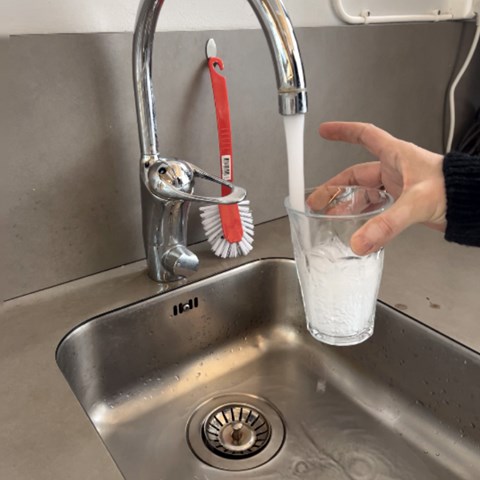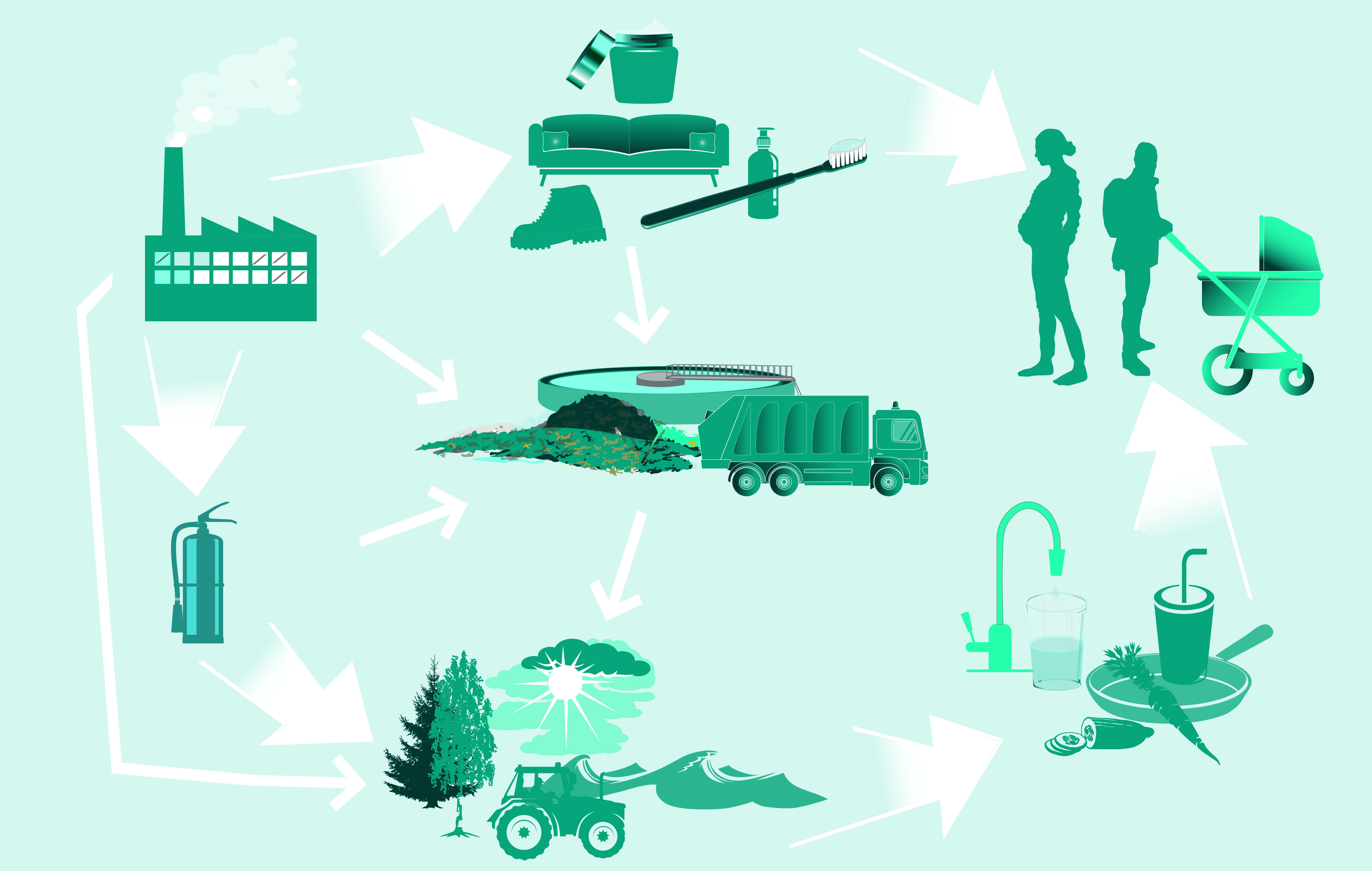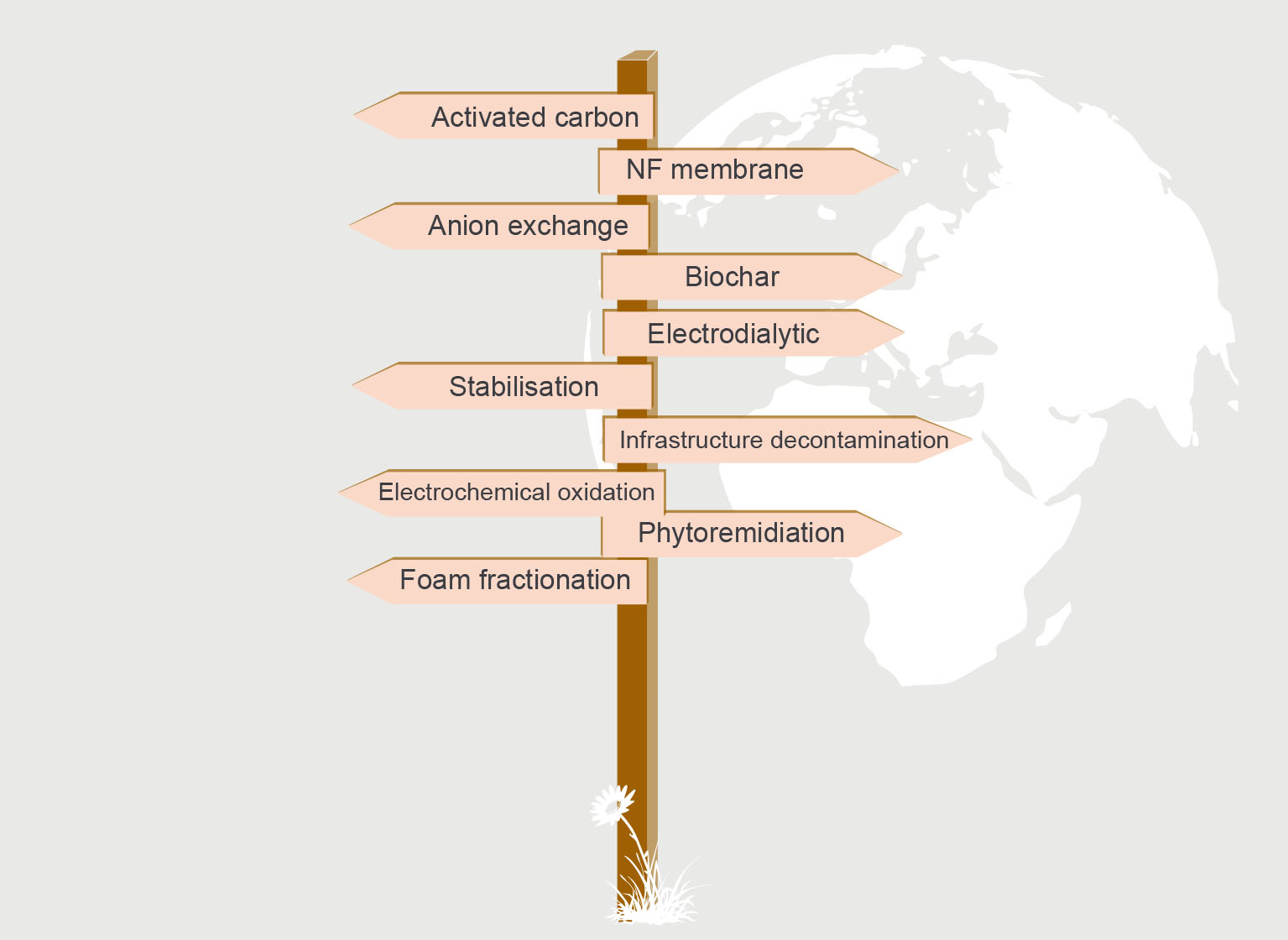Contact
Department of Aquatic Sciences and Assessment, Division of Environmental Organic Chemistry and Ecotoxicology
Department of Aquatic Sciences and Assessment, Division of Environmental Organic Chemistry and Ecotoxicology

PFAS are chemicals that are both harmful to human health and difficult to break down. People can be exposed to PFAS in several different ways, including by drinking tap water. Since drinking water is our most important foodstuff, it is important to try to reduce the level of PFAS in water. At SLU, researchers have developed methods that improve the purification of PFAS in drinking water. But they are also working towards solutions that prevent these unwanted substances from ending up in drinking water at all.
At the moment, there is a big focus on PFAS. The reason is the changing limits and guideline values for how much PFAS is allowed in food, worldwide. But there are also proposals to ban all manufacture and sale of products containing PFAS substances.
There are two main arguments for the need to reduce the amount of PFAS in the environment. First, PFAS are so-called persistent chemicals, which means that they break down very slowly, if at all. So when animals and humans absorb it, it stays in the body. It builds up in people, animals, and the environment over time. Secondly, we know that there are strong reasons to consider some PFAS as harmful to health. It has been shown that certain PFAS can negatively affect the liver, immune system, and fetal development. There is also a connection between PFAS exposure and certain types of cancer. The higher the content we get, the greater the risk of various health effects. Unfortunately, PFAS are so widespread that they are found in the blood of almost all people around the world.

The image shows examples of how we are exposed to PFAS and how it is spread in the environment. Image by: Ulrika Jansson Klintberg, SLU.
There are substantial local differences in how much and how many PFAS are in the environment, depending on where and how products with the substances have been manufactured and used. In Uppsala, there are relatively high amounts of PFAS, e.g. in the groundwater. Since the groundwater in Uppsala is used as a raw material for drinking water, it’s particularly serious. In many instances, the majority of the contamination was unknown and purification techniques were not in place.
Today, there are various purification techniques to stop the spread of PFAS via water that is treated in some way. The techniques are different depending on the type of water involved. Raw water (raw material for drinking water, comes from groundwater or surface water) is already quite clean and doesn’t need to be purified from as many other substances (matrix) as water from waste facilities.
Nanofiltration. Nanofiltration is a technique used to purify raw water. When using nanofiltration, you let the water pass through a membrane with extremely small pores. This type of purification is very effective. The disadvantage of nanofiltration is that approximately ten to fifteen percent of the water does not pass through the membrane. The water that remains contains all substances that are too large to pass through the membrane. This water, so-called retentate, then needs to be treated before it can be reused. In addition, the amount of energy required for pumping the water through the membrane is very high.
Activated carbon and anion exchange filter. Another technology that the researchers at SLU have tested to purify drinking water from PFAS is activated carbon and anion exchange filter technology. The researchers have concluded that this technique provides an effective purification. But both the activated carbon and the anion exchange materials become saturated and have to be replaced quite often, which becomes expensive in the long run. Therefore, researchers continue to try to find even more efficient filter materials.
Foam fractionation. In order to clean and purify water from waste facilities - which is much dirtier than raw water used for drinking water production - the researchers have investigated a technology that takes advantage of the physicochemical properties of PFAS. With the help of air that is added to the water, PFAS becomes concentrated in a foam which is then removed.
- This technique is called foam fractionation and is very successful in removing PFAS, says Sanne Smith, PhD student at the Department of Aquatic Sciences and Assessment. But it is important to remember that the levels of PFAS are much higher in this type of water and so it is easier to remove a big amount of PFAS in this step.
When PFAS is removed from the water that continues in circulation, the PFAS are captured in concentrate, foam, or filter materials. This also needs to be taken care of, and at this stage, it is appropriate to try to break down PFAS into other, preferably harmless substances.
Electrochemical oxidation. Electrochemical oxidation works a bit like a car battery. With the help of electric current, a chemical reaction is started by moving the electrons in the PFAS, leading to the formation of new substances. Research is currently underway into which substances are formed by this method, which is important to know before this method is used on a full scale. Otherwise, there is a risk that other, dangerous substances are formed.
There are many researchers and other actors who work on refining existing techniques and methods to stop PFAS circulating, but also on finding new ones. At present, we can still say that a combination of two or more different techniques is important to remove PFAS - regardless of the type of water you want to clean.

The image shows different options for addressing the continued spread of PFAS.
Since PFAS is a large group of substances with different properties, the different techniques have varying effectiveness in terms of purification and break down. A certain type of PFAS (those with long carbon chains) can be effectively collected with filters and foam fractionation. But those methods only collect PFAS, and aren’t very effective when it comes to other types of PFAS (those with short carbon chains). Therefore, the destruction and break down of PFAS is important. This is something that can be done with electrochemical oxidation.
Since plants are important in the diet of both humans and animals, the amount of PFAS that accumulates in plants is important for the amount of PFAS we are exposed to. But we can also use PFAS accumulation in plants to clean up contaminated areas.
Phytoremediation. Phytoremediation is a collective name for different remediation methods that make use of the different abilities of plants to take up and store or break down different types of pollution. These methods have the advantage of being relatively cheap, energy efficient, less harmful, flexible, and effective in removing PFAS, unlike many other remediation methods.
- It has been shown that PFAS accumulates mainly in leaves, and therefore hemp is a promising candidate for phytoremediation of PFAS-contaminated soil. The advantage of phytoremediation is that, in particular, short-chain PFAS are removed, unlike many other treatment techniques (e.g. foam fractionation), says Winnie.
Researchers at SLU have developed a new method that can be used to analyze what kind of PFAS are found in plants and in what concentrations. This also provides a good basis for future environmental monitoring, risk analysis and phytoremediation.
PFAS is a group of substances with over 4.700 synthetic chemicals. This large group of substances can in turn be divided into different subgroups depending on their chemical structures which also imply different properties. But all substances have a carbon chain where the hydrogen atoms are completely or partially replaced by fluorine atoms. It is precisely the high number of carbon-fluorine bonds that make PFAS very stable and difficult to break down. The chain is attached to another group of atoms. That group typically mixes easily with water, while the carbon chain is hydrophobic (i.e. doesn't mix with water at all). These PFAS have surfactant properties, which means they are both hydrophobic (water repellent) and oleophobic/lipophobic (oil/fat repellent).
PFAS are used because of their water and grease-repellent properties in everything from clothing to food packaging and firefighting foam. But the qualities that have made PFAS popular also make them dangerous, as they are very difficult to break down.